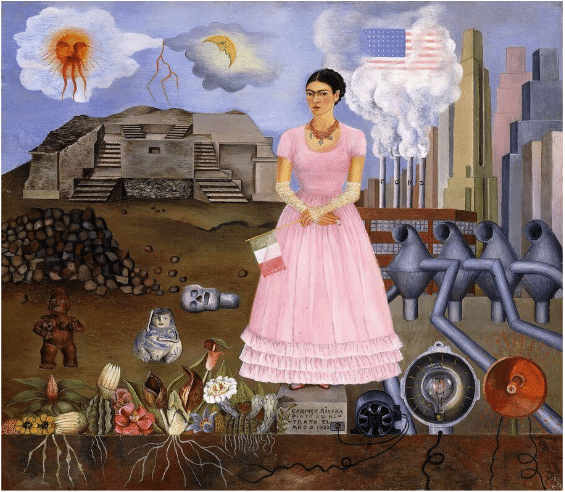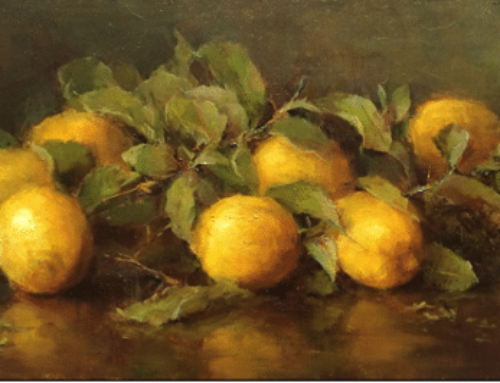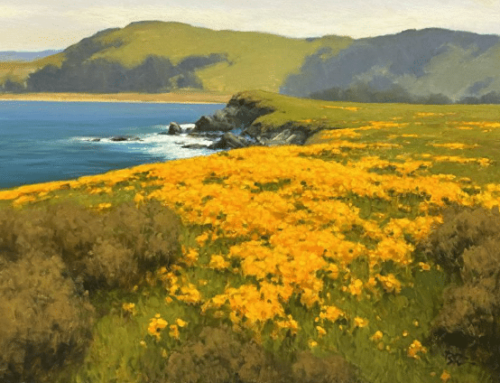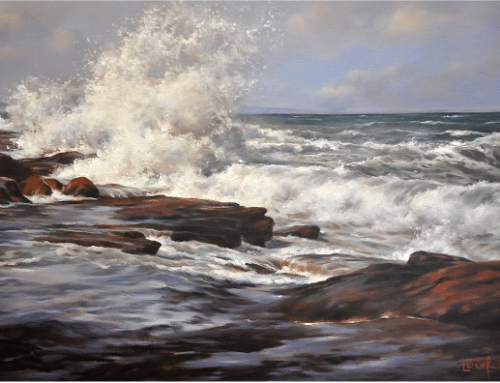What You Should Know
Frida Kahlo is one of the best known 20th century female realists to be rescued from potentially being lost to history.
A lengthy series of shows, books, plays, movies, and relentless merchandizing has made her image instantly recognizable and her name well known (among artists anyway); so much so that the term “Fridamania” has been coined to describe the phenomenon. It’s to the point where her fame is seen to stem first and foremost from a fascination with her tragic life story, overshadowing the true depth and complexity of her work.
Part of the problem is that she’s so well-known for her powerful self-portraits infused by the nature and artifacts of Mexico. They’re amazing, and they make the commercialization of her image all too easy.

Self Portrait Time Flies, by Frida Kahlo, 1929, via Useum Art Gallery (note the inclusion of the modern Euro-American airplane and clock around her vs. ancient indigenous stone necklace she wears)
Born to a German father and a mestiza mother, Kahlo spent most of her childhood and adult life at La Casa Azul, her family home in Coyoacán – now publicly accessible as the Frida Kahlo Museum. Although she was disabled by polio as a child, Kahlo had been a promising student headed for medical school until being injured in a collision between a bus and an electric train at the age of 18, which, after over 30 operations and years of bedridden recovery, caused her lifelong pain and medical problems. Doctors said it was a miracle she lived, let alone was able to walk again. It was during her recovery that she returned to her childhood interest in art with the idea of becoming an artist.
Much of her life as an artist was eclipsed by her domineering older husband, muralist Diego Rivera, with whom she had an on-again/off-again marriage full of chaos and drama. Still, by 1948, Kahlo was famous for paintings that addressed miscarriage, heartbreak, and emotional and physical pain by using depictions of her own body—often splayed, bleeding, and nude. She’d also developed a reputation as an outspoken activist who championed Mexicanidad, a post-Revolutionary movement that celebrated Mexico’s indigenous culture.
However, she did not become very widely known outside Mexico until later, particularly during the 1970s, when feminist critics fighting the systemic exclusion of women from art history championed her work.
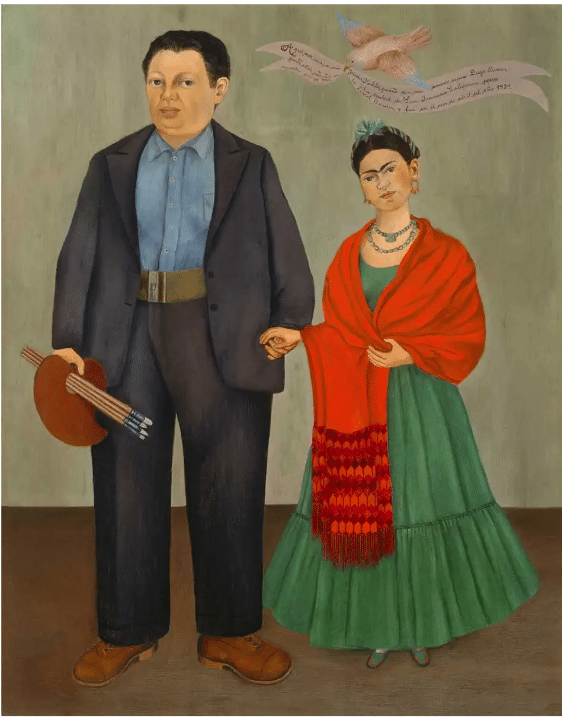
Frida and Diego Rivera by Frida Kahlo, 1931, via Alta Journal
Why You Should Care
Frida Kahlo’s art is full of meaning and a rare poetry that marries personal honesty and inner strength with deep knowledge of contemporary trends, cultural history, and felt experiences about the place and time in which she lived.
Her work is far richer and wide-ranging than common knowledge would have you to believe. Thoroughly versed in European painting, Kahlo chose her country’s naïve-folk style to explore serious questions concerning identity, postcolonialism, gender, class, and race in Mexican society.
What You Can Steal
Frida Kahlo’s portraits, and all her paintings, are rich in significance. She flattens the picture plane, ensuring that the background or even the sense of distance and space do not diffuse any of the intensity she wants the viewer to feel.
Realism isn’t necessarily photorealism; you don’t have to make your painting look like a photograph if you use paint expressively and you’re willing to take risks in other ways.
Demand the viewer’s engagement with your work by making every detail in some way significant and contributive to the whole, in terms of composition and, ideally, meaningful impact.
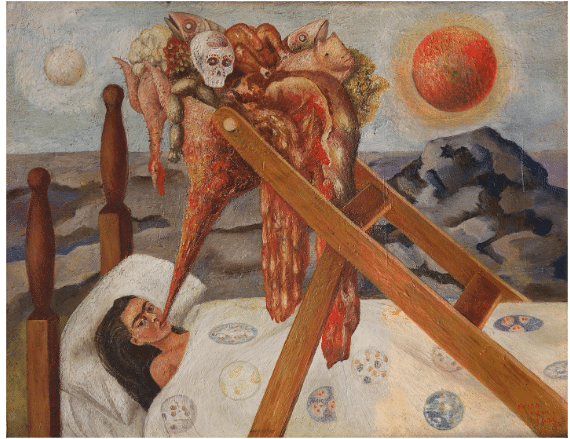
Frida Kahlo, Without Hope, oil, 1945
How This Can Inspire You
Frida Kahlo demonstrates how to be a passionate artist. Far from painting for praise or money, art for her was a personal mission. She learned what the global art world was doing, took what she wanted from it, and then fearlessly created and stuck to her own vision and style. This she did not because she was particularly stubborn or individualistic (though she was), but because she was vehement about art and its role in society: Kahlo made sure she found what she wanted to say (about her life and her world) and fitted it with a perfectly matching style (related to her personal history, mixed European and indigenous roots, and surrounding contemporary Mexican society).
She fiercely held to her own “magic realism” style, blending realism with fantasy and accentuating unflinching autobiographical elements with symbolism, meaningful details, surrealism and complexity.
Her autobiography alone is inspiring. She overcame a debilitating childhood disease followed by a crippling bus accident that left her in chronic pain all her life. She endured her husband becoming far more famous than she, and she shrugged off a world of patriarchal prejudice and indifference to live within and for her art.
Something to think about: What would it look like if you gave yourself permission to use your art to say what you really think about life?

